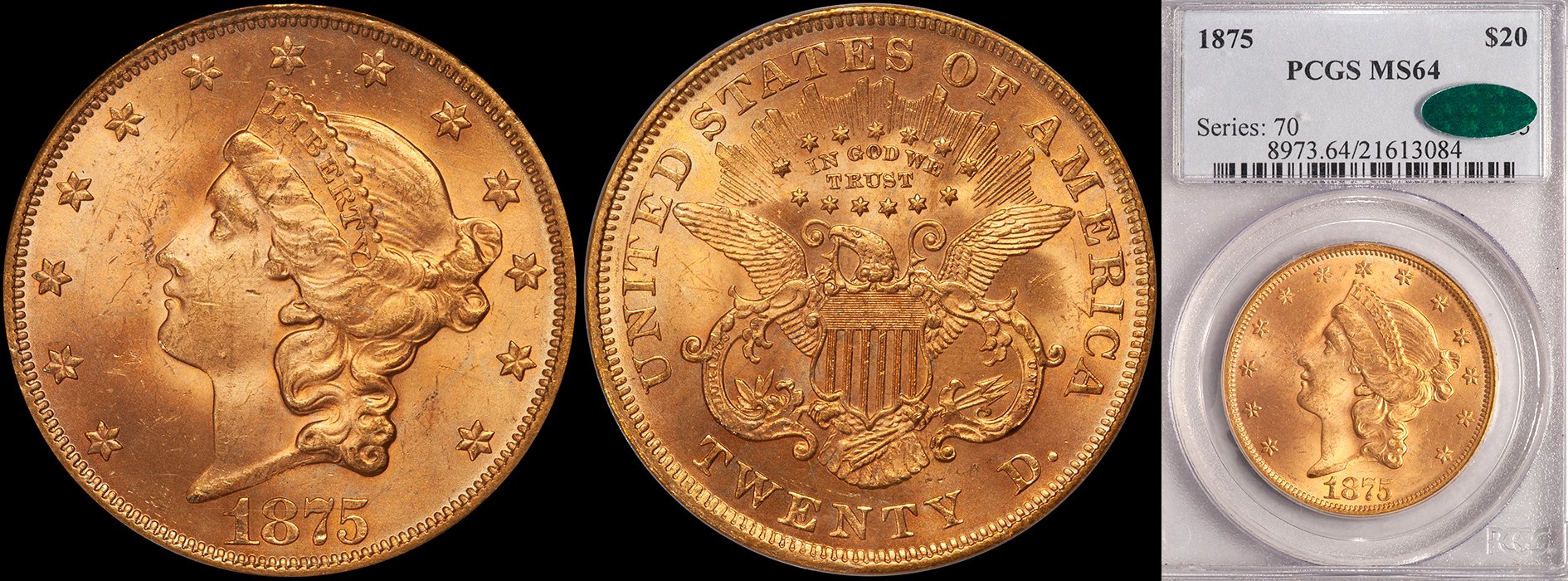The 1838 Eagle
/One of my absolute favorite United States gold coins is the 1838 eagle. Here are some impressions I’d like to share about this fascinating issue. The ten dollar gold denomination was abolished in 1805, along with the silver dollar denomination. I’ve read in various coin books that the reason for this was “extensive melting by bullion dealers.” I’m a bit skeptical about this as a reason and would personally think that for Eagles, the reason had to do more with a lack of demand and/or available gold bullion.
After a thirty-four year hiatus, the eagle denomination was resurrected in 1838 and the task of designing the new coin fell to Christian Gobrecht. The new design featured a bust of Liberty facing left on the obverse and an eagle on the reverse. Liberty’s neck on the 1838 eagles is distinctly curved and the back of the neck ends in a curious, abrupt triangle. Another identifying factor is strands of hair over the ear which are swept-back in appearance and which cover much of the ear. The portrait is positioned quite a bit differently than on other Liberty head eagles. On the 1838 (and some of the 1839), the tip of the coronet is placed below the outside of the sixth star while the back of the neck is below the outside of the thirteenth star. On the later issues, the tip of the coronet is placed between the fifth and sixth stars while the back of the neck is located past the inside of the thirteenth star.
In 1838, only 7,200 eagles were struck. I estimate that 50-75 are known today and break these down as follows:
-
Very Fine and below................15-25
Extremely Fine.....................23-31
About Uncirculated.................10-15
Uncirculated........................2-4
Most examples of this date grade VF30 to EF40 and show clear evidence of considerable circulation. The surfaces are generally very heavily abraded with clusters of marks seen most often in the left obverse field. This issue has better luster than one might expect and higher grade pieces are sometimes quite reflective. Most show enough wear, however, that the luster is considerably impaired. The natural coloration tends to be a medium to deep greenish-gold hue. I have not seen many examples that have original color as most have been dipped or cleaned at one time. The strike tends to be reasonably sharp with good overall detail at the centers; some examples have weakness on the radial lines of the stars.
The 1838 eagle is scarce in all grades and it becomes truly rare in properly graded AU50 or better. Most AU examples are in the low end of this range and a solid AU55 to AU58 is very rare and extremely desirable. I have personally seen only a handful of nice examples in the last few years, the best of which is a PCGS MS63 that sold for $63,250 in the April 2002 Heritage auction.
There are also three Proofs known. One is in the Smithsonian and it grades PR63, one is in a private collection (ex: Cardinal Spellman) and is graded PR65 by PCGS and the final example is also graded PR65 by PCGS and is ex: Pittman. This coin last sold for $550,000 in 1998 and it would sell for considerably more than this if made available.
Pricing for the 1838 eagle is currently very inaccurate. Coin World Trends shows values for this date at $2,900 in EF40, $4,025 in EF-45, $6,250 in AU50 and $11,000 in AU55. If you can purchase a problem-free 1838 eagle in these grades for prices anywhere near these levels, you’ve found yourself an incredible bargain. I’ve noticed that in the last few years, lower and medium grade examples that have been offered for sale at auction have brought levels far, far greater than Trends.
So what is it exactly about this issue that I found so intriguing? I can think of a number of reasons. It is a first-year-of-issue coin and the first Eagle to be struck after the denomination was resurrected after a three-and-a-half decade hiatus. It is a low mintage coin that is scarce in all grades and very rare in higher grades. It is a unique and very different design that was used on this denomination for just two years. And last but not least, it is exceptionally undervalued at current price levels.









